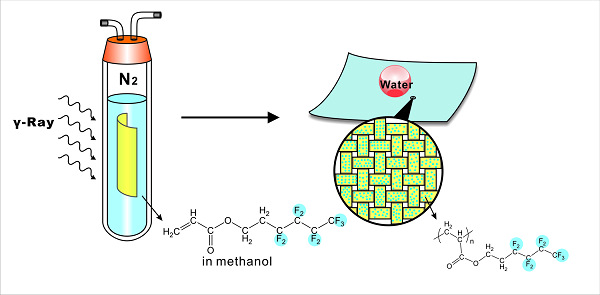






Researchers at the Chinese Academy of Sciences in Shanghai, China, have developed a cotton fabric that is completely impermeable and that can also be put into the washing machine, without losing its superhydrophobic properties.
This is not the first time that scientists have developed superhydrophobic fabrics, but the problem had always come up after washing the clothes – the waterproof effects tend to disappear with washing, and the clothes become uncomfortable to wear.
Jingye Li, a researcher who worked on the project said that “our superhydrophobic cotton looks almost the same as normal cotton fabric.
"The small air holes between the cotton bundles are retained, which make it breathable and comfortable to wear, and it feels smoother than cotton because of the superhydrophobic nature of the fabric.”
Li and his team tested the durability of their new fabric by putting it into the washing machine, with different detergents and 50 stainless steel balls, in order to simulate repeated laundering.
The tests proved that even after undergoing the equivalent of 250 domestic washes at 40oC, the fabric kept its superhydrophobic properties.
This waterproof cotton was obtained by grafting a superhydrophobic polymer onto bundles of cotton fibers, RCS reports.
The innovation is that this polymer prevents the water from adhering to the surface of the cotton, the droplets forming spheres that roll off the tissue.
This way, the dirt and all other surface materials are removed (just like it happens in nature with the Lotus leaves who have nano-scale crystals of wax on them), without the waterproof property of the fabric being affected.
But how does this polymer stick to the cotton?
According to Li, the fabric was not simply coated with the polymer; the cotton was first irradiated with gamma rays, which have formed covalent bonds between the surface and the polymer, and this is what actually keeps the polymer glued to the fabric.
Neil Shirtcliffe, a superhydrophobic materials expert at Nottingham Trent University, UK, said that “few superhydrophobic surfaces are abrasion resistant as the high roughness required makes them fragile, so it is impressive for a textile to survive this many washing cycles.

"The results are very promising, but are still some way from a finished product.” (Softpedia.com)